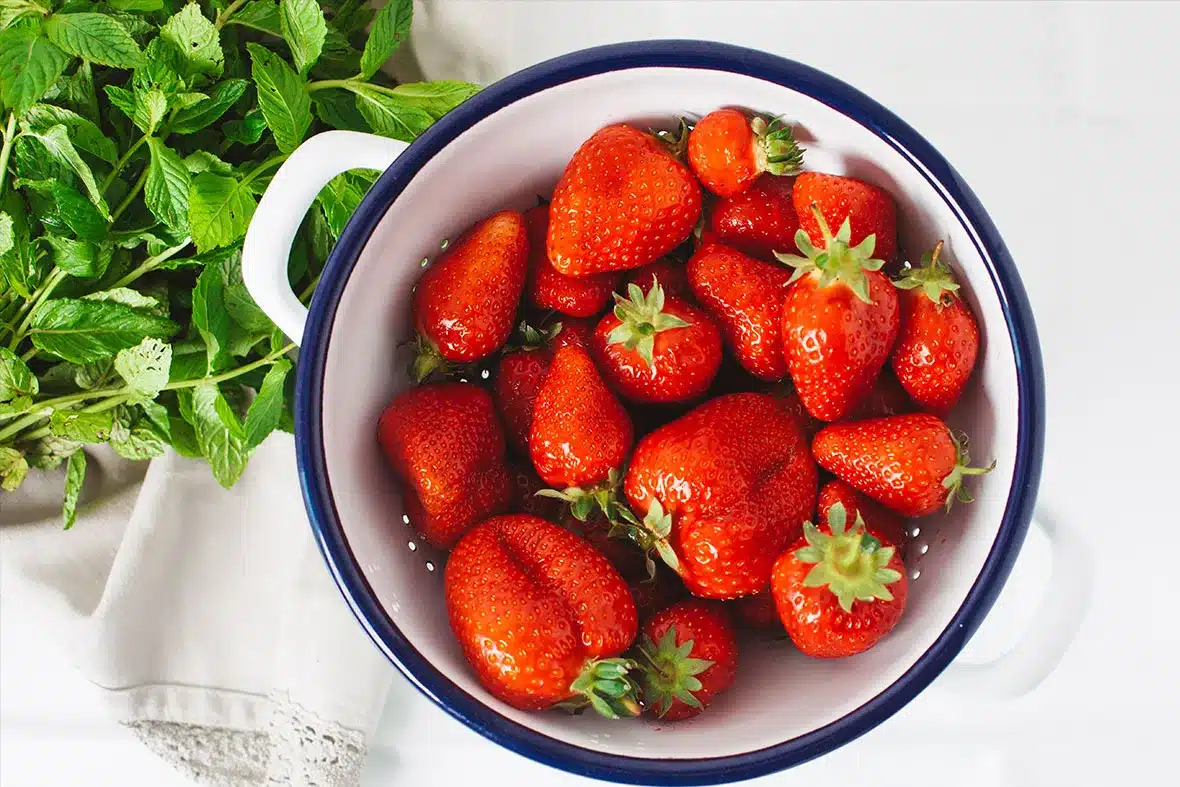Strawberries are one of the easiest fruiting plants to grow and it is certainly a treat to feast upon these sweet delights picked fresh from the garden
Strawberries are ground-hugging, herbaceous plants, growing to about 15cm high and spreading into a clump 50–100cm wide. Their flowers are simple, five-petalled blooms that are pollinated by bees. These white or occasionally pink flowers are followed by succulent red fruits. Each clump sends out long thin runners (or stems) that take root to form a new plant.
Varieties
There are many different varieties of strawberries. Check with Burbank House & Garden for the best varieties for local conditions.
Getting started
Burbank has certified strawberry runners available for planting during the cooler months. Potted plants are available during spring and are a very popular way to begin your strawberry growing.
Strawberries can be grown in pots, containers, hanging baskets as well as in garden beds.
In pots and containers
When planting strawberries in pots, containers and hanging baskets always ensure that a premium quality potting mix is used. A 30cm – 40cm growing size is suitable to grow up to 3 strawberry plants. Choose a sunny position. Strawberry fruit trails from the main part of the plant, so these remain clean and are less likely to spoil when grown in containers.

In the garden
Prior to planting, dig over the soil to remove weeds and any large clods, and add in plenty of compost, animal manure or blood and bone.
Position your plants about 30cm apart, in full sun. Strawberries do best in well-drained soil, so plant them into soil that has been mounded up slightly. The crown of the plant, which is the swollen stem base, must be left at the surface of the soil and not buried too deep.
Care and maintenance
Water well, especially when the young plants are establishing, and during dry summers. When planting in the garden, surround each plant with a layer of straw mulch so the fruit does not spoil by touching the soil.
Strawberries in the garden should be fertilised with a small handful of a fertiliser high in potassium around each plant as the first flowers are forming, and water well.
Those strawberries being grown in containers should be fertilised fortnightly with a high potassium liquid fertiliser such as Thrive or Flourish formulated for fruiting plants. Fertilise throughout the fruiting season.
Harvesting
For the fullest flavour from home-grown fruit, pick the berries at the right degree of ripeness. They are at their best when each fruit is three-quarters red.
Watch closely as the fruit ripens quite quickly and can deteriorate or be eaten up by other creatures that share your garden. To avoid bruising ripe fruit, harvest it using scissors and leave a small piece of stalk attached.
Pruning
Over summer, strawberry plants send out runners. These modified shoots can be used to propagate new plants but if you don’t need new plants, cut these runners off. After fruiting has finished, tidy up the bushes by giving them a hard prune down to 10cm.
After about four seasons the strawberry plants will become less productive and should be replaced with new certified plants from Burbank.

Troubleshooting
Strawberries are very desirable to creatures other than humans. Possums, birds, slugs, snails and even dogs compete for the luscious fruit. Bird netting or wire mesh stretched over the plants may help. Repel snails and slugs with pet-safe baits or squashing.
Strawberry plants can be prone to some number fungal problems. Avoid wetting the foliage late in the day leaving the foliage wet overnight. Water the soil around the plant. Drippers or soaker hoses are very good to water strawberry plants.
Check with the experts at Burbank if you think that there may be a problem.
